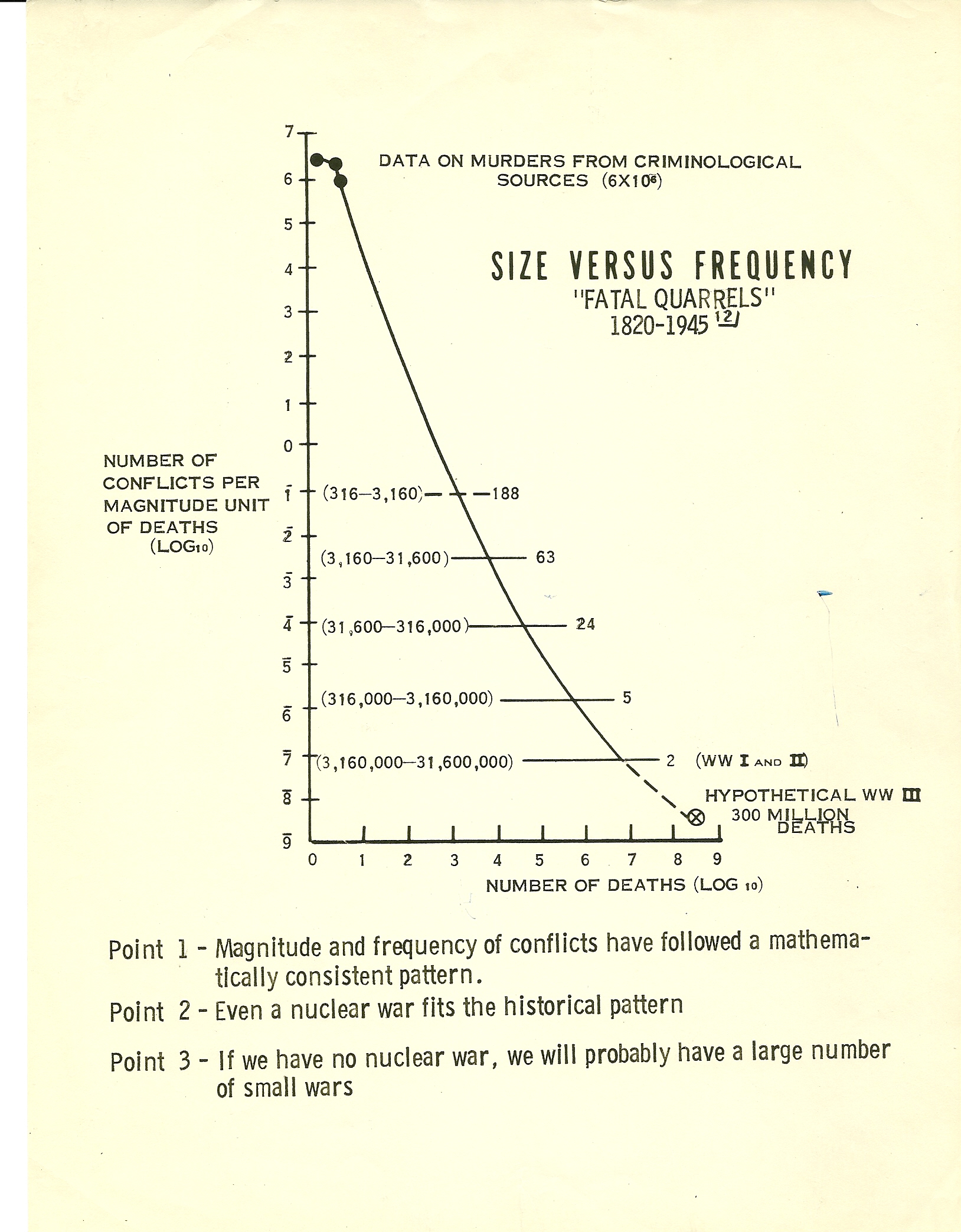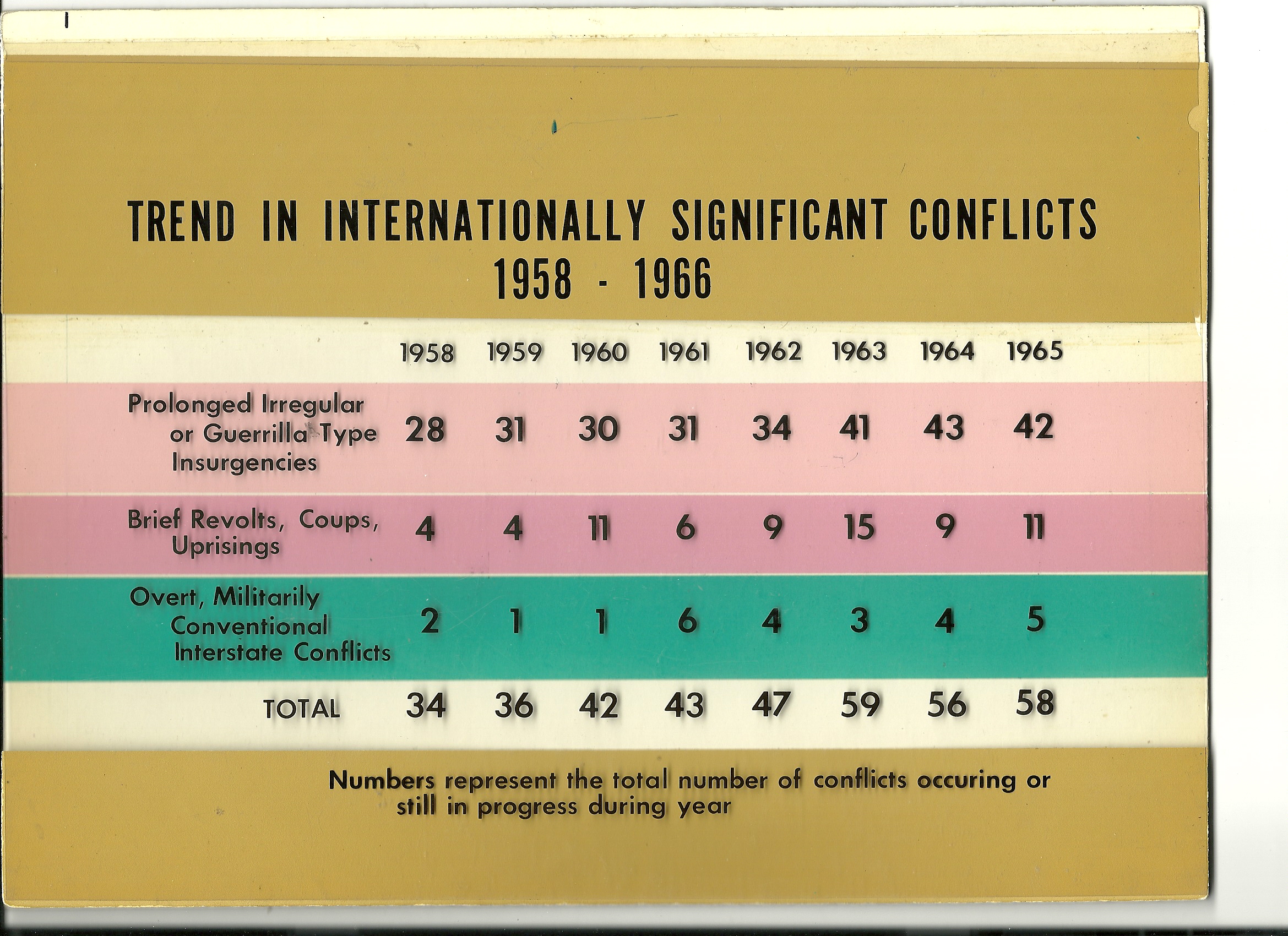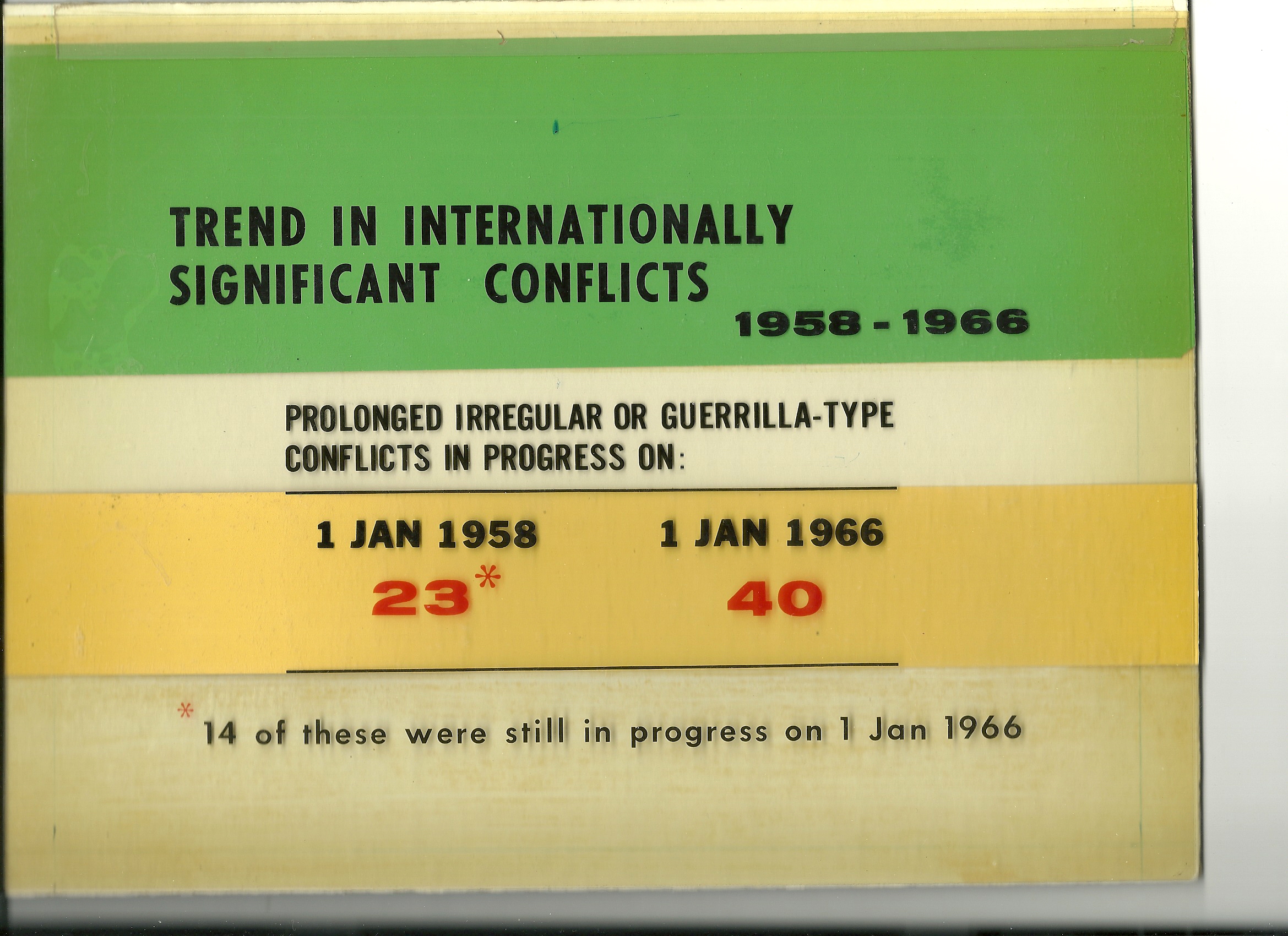- Details
- Written by dave
- Category: Pentagon Years 1963-1966
- Hits: 5196
DSCOPS
In Army lingo the office that is called Deputy Chief of Staff For Plans and Operations - is nicknamed DSCOPS.
From politico-military planning, to operational control of all Army units inside the United States, it was the heart of military long range thinking and planning for future wars or planning for them.
So I was assigned to the small staff of midgrade - from Major to Colonel - Army officers who did more thinking than doing. And reports to the 'Army Planner' - brigadier general who provided both the Lieutenant General who oversees the 'operations' of Army units inside the US, and the Chief of Staff of the Army who, in his dual hat as highest ranking Army officer, and as a member of the Joint Chiefs of Staff who report to the Secretary of Defense and through him to the President as Commander in Chief.
That Planning office dates far back, but was especially signifcant leading up to and through WWII, as it worked to insure that military planning and operations were within the scope of the war objectives and policies set down by the President.
There was no separete 'Air Force' then - only an Army Air Corps as part of the Army - thus under General George C Marshal and a Navy under the Chief of Naval Operations, under which the Marine Corps operated.
General Eisenhower, during WWII was somewhat frustrated by that increasingly obsolete arrangement, which he set right as President getting Congress to pass a Defense Department (not War Department) Reorganization Act that created the Unified and Specified Command structure, whereby all military forces OUTSIDE the United States were divided into geographical regions called Unified Commands - headed by 4 star generals who might be from any service - Army, Navy, or Air Force - but who reported directly to the Secretary of Defense (not the Joint Chiefs) and through him to the President.
Then some special commands - like the Strategic Air Command - with the main nuclear - air borne or by ICBM missile - were Specified Commands.
And that left the Service departments Army, Navy, Air Force with uniformed Chiefs of Staff, and Secretaries of the Services responsible, not for military 'operations' but for recruting, training, service personnel and units in the active and reserve services to get them ready for war, and provide them with the weapons and logistics of war.
As the United States ended WWII as the most powerful and wide ranging nation on earth (with the arguable exception of the Soviet Union with its nuclear forces) that militarily sound - with clear chains of command and military responsibility from the individual soldier all the way to the Present - arrangement served us well for a very long time.
So I was in a Pentagon office, where some other Classmates were also - where we thought and studied about the nature of international armed conflict and war, the US actual and likely policies toward such conflicts, and made recommendations to the Chief of Staff of the Army how US Army forces should be organized, trained, and readied for any contingencies.
(At one time, while I was in the Pentagon I met Air Force Colonel Brent Scowcroft. He was doing essentially what I was doing as a staff officer, but for the senior officers of the Air Force. He made the remark he envied the Army for having a dynamic Policy and Plans staff, which the Air Force did not have. Of course he went on to become a General officer and the head of the White House's National Security Council.
He had very much to 'do it alone' for the Air Force. While the Army had a full complement of bright - yet field and even combat tested mid grade officers in DCOPS Policy and Plans, who could produce brilliant analysis for the most senior officers - like Harold Johnson. }
We thought in longer range terms than almost any other officers (perhaps except those attending the War Colleges which, however, were just 'individual' officers professional views, while the Pentagon staff's views were aimed at making real changes in current Armed forces). And, depending on our professional military views and projections - honed, unlike academics - by actual participation in and command of US Army units in combat, and after years of development as staff officers and commanders with constant contact with 'peer' (by age, rank, and military experience) fellow officers, we were the up and coming 'next' generation of war fighting commanders and staffs.
With that setting of context, now I will tell what I did, on a day to day basis as one of the active 'thinkers' of the US Army. Who responded to questions by more senior (general officer level) staff officer, generated papers or studies on our own.
First, where was my Pentagon Office?
- Details
- Written by dave
- Category: Pentagon Years 1963-1966
- Hits: 3821
Issues I Was Involved in During Pentagon Years
For starters here is a summary list of the issues I was involved in during the 3 Pentagon Years I spent either in the Army Planning Staff (2 years) or in the office of the Assistant Secretary of Defense for International Security Affairs where I was the Principle Staff Assistant for Counterinsurgency (1) year.
On Army Plans and Policy Staff (2 years)
Alert Against Possible Attempted Coup after Pres Kennedy's Assasination, Nov 23, 1963
US-USSR Test Ban Treaty
Input for Annual Long Range Army Strategic Plan
Staff input and Reviews for the Chief of Staff of the Army for issues before the Joint Chiefs of Staff.
Study of the projected global strategic 'Interests' of the United States
Small Study for the Army Chief Planner of What 'Signals' North Korea got that triggered their entry into the Korean War in 1950.
Study of the residual capabilites of the US Army after a Nuclear War exchange striking the US, and proposed winning strategy afterward.
Study of the types of future wars the US is most likely to become involved in, and the appropriate US strategies for achieving US goals in them.
Proposals for recasting within the Army, the concepts for dealing with wars below the Conventional Warfare spectrum.
On the Secretary of Defense's Staff (1 year)
Completion of Analysis of the locus, roots, US remedies for coming Insurgent Wars
Development of a rational US Spectrum of War Scale
Briefings of National Security, Intelligency Agency, Department of State staffs and principals on our Army Analysis of future US wars.
Backup for Secretary of Defense Testifying to Congress on the long range political value of US Military Assistance Programs
Drafting of Secretary of Defense McNamara's Major Policy Speech to the North American Association of Newspaper Editors May 18th, 1968.
Response to queries - press, academic institutions, foreign governments - for the analysis behind Secretary of Defense's 1968 speech.
Communicating with the UK Defense staff on the significance of the 1968 McNamara Speech.
During the second year, while still in the Army staff I had collaborated with Classmate Paul Gorman on two of the major studies - Post Nuclear, and Counterinsurgent strategies. Both, at the time, were Classified studies. And its findings and recommendations were available only on a need to know and secret security clearance basis to Pentagon officials. But the results of the Second One, on Insurgencies, with data drawn from unclassified sources, and which policy recommendations were open intergovernmental recommendations to the public, and became widely circulated by Secretary of Defense Robert McNamara's Speech in 1968 were mine alone.
In the next sections I will summarize in some cases, and elaborate in others, the intellectual issues that were involved - and the positions I took - in many cases against the conventional Washington "Wisdom" about wars the US would be engaged in. At the time, the Vietnam War was growing in size of US committment and costs, and there had to be a rethinking about the nature and threat to US interests of 'insurgent' wars and how the US should respond to them.
Vietnam was just a harbinger of world change, which even the Army resisted dealing with effectively in conjunction with allies and other than military agencies of the Federal Government.
- Details
- Written by dave
- Category: Pentagon Years 1963-1966
- Hits: 3815
The Changing Spectrum of War
The US was already getting deeper into the Vietnam 'War' when we tackled the question about what kind of 'war' was Vietnam - and will there be more in the future. For if there were going to be more conflicts like Vietnam, just how should the Army prepare for these, and what kind of US means should be applied to such conflicts?
There were already debates in the US Government on not only 'whether' we should be involved, and if so, how should we respond. Just with military force?
Also, already, President Kennedy, before he was assasinated, had given Army Special Forces - the 'Green Berets' special visibility and recognition that stemmed from the advice given to him by his 'Brain Trust'. Highly educated advisers like Ted Sorensen, Walt Rostow, McGeorge Bundy, studied the way North Vietnam was clandestinely invading South Korea, using a combination of assassination, guerilla tactics, but also local remote area, grass roots 'political education' efforts to contrast themselves with the corrupt central South Korean Regime. So they turned to US Army Special Forces who were selected and trained to operate underground, and knew local languages and cultures where they operated.
So the Kennedy Administration started its efforts to save an independent South Vietnam by sending Special Forces, nominally as 'advisors' and trainers of South Vietnamese forces. And, just as the new initiatives announced for a 'Peace Corps' made up of young, unarmed, idealistic Americans going into remote and rural 3d World places to 'help' those societies, the same idealistic idea of 'countering' communist subversion in remote areas of South Vietnam being progressively 'taken over' by communist Viet Cong, by armed US Special Forces or those trained by them who also tried to win the trust and support of rural peasants with ameliorative medical, educational, agricultural efforts was the first serious effort at a new strategy for US backed 'counterinsurgency.'
While the US military long had a history of dealing with 'guerilla' warfare tactics, and it had created Special Forces to enter 'behind enemy lines' in order to organize resistance movements, its only modern successful efforts to defeat a communist backed insurgency, was in the Philippines in the early 1950s where an Air Corps Officer - Ed Landsdale helped the Philippine Armed Forces develop a strategy of psychological operations along with "Civic Action" programs to 'win hearts and minds' of those being recruited by the communists.
But there were several problems with this 'Green Beret' approach to Vietnam.
First of all, as the Viet Cong, backed by North Vietnam continued to succeed with its creeping insurgency, the US response was dominated by deploying regular Army and Marine conventional-war combat units relying on greater firepower when and if it could find insurgents - with the only innovation being use of Huey helicopters in search and destroy missions.
Secondly the US higher commanders were neither experienced or trained in Special Forces type 'counterinsurgency' and were convinced those 'peasants' could be defeated by enough modern conventional forces. They mistrusted the unconventional Special Forces except for 'special operations' not the main conventional operations.
Thirdly, except for the small number of Special Force units, the overwhelming number of Army, Navy, Air Force, and Marine units going into Vietnam had been organized and trained as Conventional War units.
What would have to be done - and for future, and not just for the current, war, would be a top down set of new policies, strategies, organizations, equipment, and training.
It was toward that end that our Study was addressed. And we started by studying every war in the world for the past 100 years. To identify Ends, Means, and Outcomes.
- Details
- Written by dave
- Category: Pentagon Years 1963-1966
- Hits: 4058
It took me a few months to get used to the pace and complexity of doing work in the Pentagon. And to come to terms with the fact that I was being asked to make policy recommendations on very high level national security matters. Some of which I knew relatively little about. Yet often when there was a crunch, being expected to deliver my paper literally overnight.
Picking Herman Kahn's Brains
At one point in my first year, I and Paul Gorman were tasked to sum up the long term 'strategic interests' of the US around the world - regardless of what kind of relationships the US currently had with all those nations - heading toward totalling up to 100 by 1960s.
For that we did a study, and a budget with which to collect data from many large institutions, and think tanks like Rand Corporation. On populations, economies, natural resources, trade, military and industrial power or lack of it, political groupings, etc.
And we tapped Herman Kahn's 'Hudson Institute' run by he as one of the foremost futurists in the world, and one willing to argue that nuclear war was survivable by the US.
We grilled him for several hours at the Pentagon. Got interesting projections from him.
One of the most illuminating - to me - findings was that Nigeria was going to be a major strategic interest for the US for its large offshore Oil reserves - which would rise in importance as oil reserves peaked and declined in the Middle East. But at the same time that very populous country could become very politically unstable as the dominant and smarter, but minority Igbo Tribes - with Christian religion, were challenged by the much larger Muslim Hausas. While the entire Army was miniscule and the ONLY truley 'national' organization.
And events which have unfolded over the past 50 years have borne out our predictions and analysis.
Post-Nuclear War Planning
While much of that large study we did was classified, I can say that some very original suggestions came out of it in the event the major industrial centers of America were destroyed. To continue to prosecute the war against the Soviets to at least their desire for a cease-fire. By capitalizing on the resources from countries whom they would not target for nuclear strikes after their own weapons have been greatly reduced by our counter-strikes and larger numbers.
Study on Wars involving the US at the 'Lower End of the Spectrum of Warfare'
It was this study that Gorman and I worked on which led to a radical new way for the US Government, its Department of Defense, and the Army to both predict where such wars would occur and how the US should respond. And started a debate inside the Joint Chiefs even on how to describe, and name, such 'wars.' And on what general criteria to determine that the actions had reached, in fact, the level of 'war.'
I will attempt to trace the evolution of the insights that study gave to policy makers, just as I continued on while Gorman had been assigned to go to the National War College and was not involved with what followed,
It was this work, first inside the Army staff, and then on the staff of the Secretary of Defense that I made my most significant contribution to National Security in my uniformed career.
We studied over 100 wars to extract their common characteristics, from coups to projected nuclear.
We even found Mathmatical Models, such as Richardson's 'Fatal Quarrels.'

- Details
- Written by dave
- Category: Pentagon Years 1963-1966
- Hits: 4087
The Global Trend of Wars
First of all it was evident that we had to think 'out of the military box' and start from a National US policies perspectitive, and work down from that to what part us Military could most effectively play. First of all, we had to start with the trend in conflicts that were INTERNATIONALLY SIGNIFICANT - that is those armed conflicts which the United States, as a World Power, had to take into account because they either affected our strategic interests, threatend us or those countries with with we had treaty obligations, or where countries asked for our assistance.
We first measured conflict trends just over the 8 years from 1958 when such 'irregular' or 'lower spectrum of war' conflicts started rising to 1966 when our study was due.
The charts below were the Unclassified results of our study. They were deliberately made that way so that they could be studied by other - than Pentagon - agencies of the US government, and could be read by the Press.

The total trend was up, and especially irregular forms of conflict when compared with conventional war conflicts.

Then came the question WHERE were those conflicts.

It was clear most of the prolonged insurgencies were in the 3d World regions - not in the advanced European or North American regions.
Now these results of a picture of world Trends of the numbers of lower spectrum of war conflicts came as a surprise to senior military planners in the Pentagon.
But the bigger surprises - on what other trends correlated mostly with the number and locus for 'lower spectrum of war' - were yet to come.
